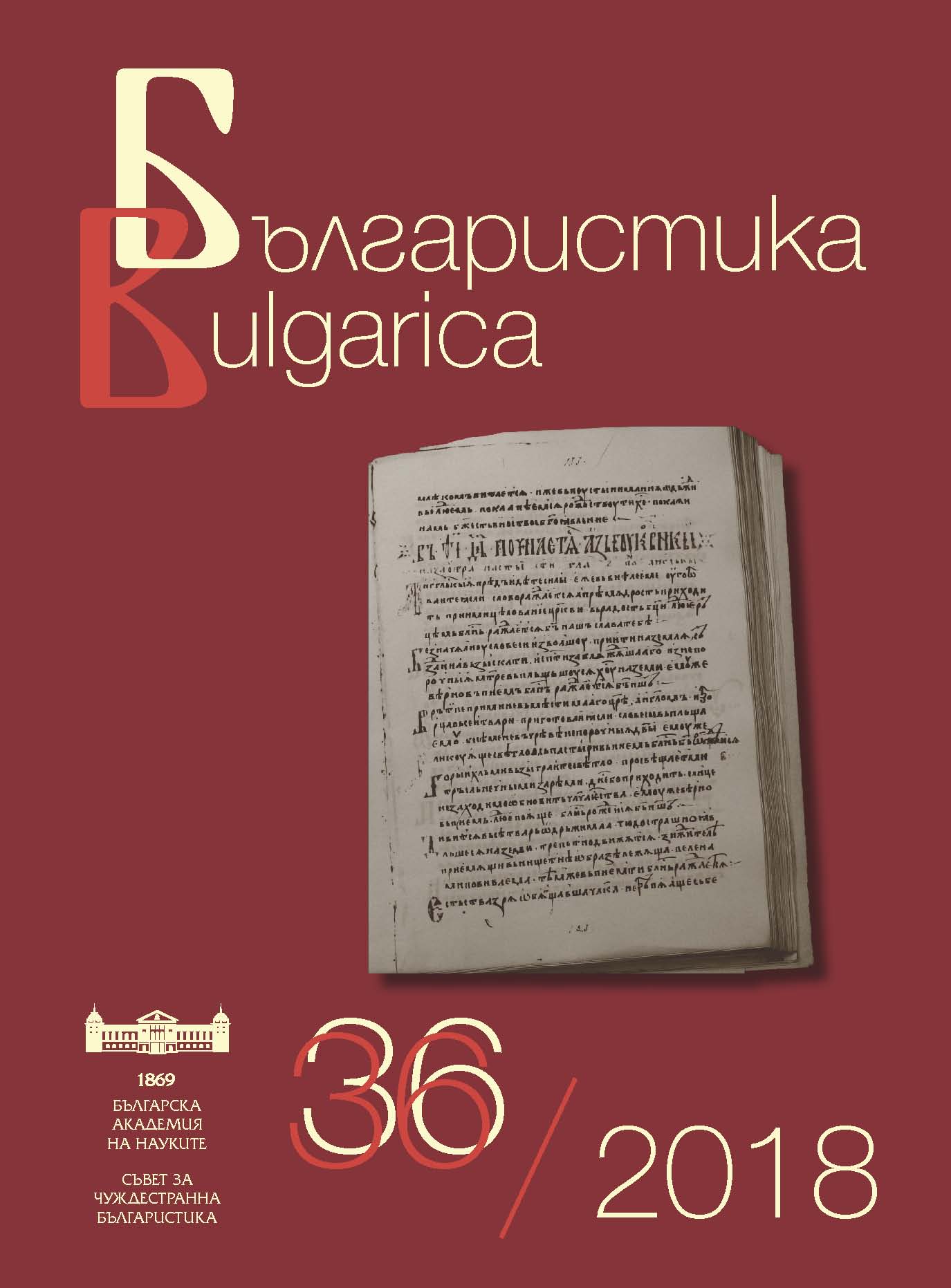
We kindly inform you that, as long as the subject affiliation of our 300.000+ articles is in progress, you might get unsufficient or no results on your third level or second level search. In this case, please broaden your search criteria.

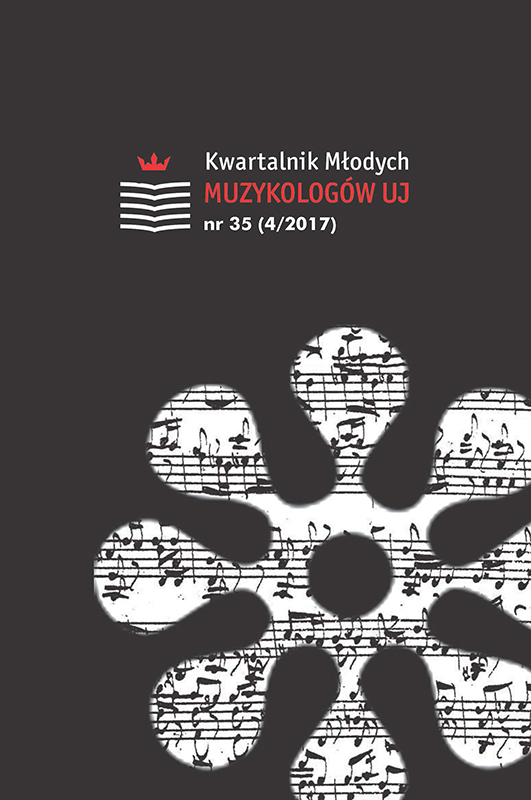
Since the middle of the 19th century, Franz Schubert’s song cycles Die schöne Mullerin and Winterreise are not only considered as an outstanding contribution to the Lied genre, but also as “romantic” compositions par excellence, whose protagonists might be depicted adequately only by performances of male singers. The “masculine nature” (Carl Lafite) of these thoughts, emotions and actions might be inappropriate for female singers. This attitude, which is still present today (even amongst professional musicians and musicologists), though, contradicts not only the performance practice of the early 19th century, but even Schubert’s handling of his songs. In fact, the idea of these two cycles as “men’s cycles” has only developed in the course of the 19th century, when various impacts such as the general upvaluation of the Lied genre, the transfiguration of the composer, the interpretation of his songs as being a personal statement, and the idea of Werktreueshaped the reception of Schubert’s compositions. These factors led to the consolidation of strong and still valid power structures, in which men are regarded as the norm, whereas women (and other alternative voice categories like countertenors) appear as deviation from this norm. These structures are tightly related to similar conditions and principles which have been outlined in the past decades by the masculinity studies on higher levels of our society. In this paper, I will set out this whole process by delineating the performance practice at Schubert’s time, his own attitude (insofar as it is possible), the various influences of romantic musical aesthetics, and the development of the mentioned performance tradition towards the end of the 19th and the beginning of the 20th century. Furthermore, a number of statements from the 21st century will demonstrate that these concepts are still common today, and I will correlate them with some certain principles pointed out by masculinity studies from the last decades.
More...
The work concerns Giovanni Battista Bassani’s output and its reception with a particular emphasis on manuscripts preserved in the collection from parish church in Grodzisk Wielkopolski. The oeuvre of this composer has been preserved to a huge amount today—there are 441 manuscripts and 67 prints preserved in 287 copies.The article consists of two parts. The first chapter presents a list of sources of the composer’s works, created using the RISM database with special attention to the Polish sources. In addition, a list of sources identified as the transmission of Bassani’s output is presented. The second part of the article characterises the composer’s works preserved in the collection from parish church in Grodzisk Wielkopolski.
More...
Dresden played no role in Carl Ditters von Dittersdorf’s life, but history made this city one of the most significant places regarding preserved sources of his works. In the Department of Special Collections (German: Sondersammlungen) of the Sächsische Landesbibliothek—Staats- und Universitätsbibliothek in Dresden (English: Saxon State and University Library Dresden, abbr.: SLUB), there are, among others, more than thirty archival sources containing Carl Ditters von Dittersdorf’s symphonies. That makes it the third richest collection of symphonic works by this composer. The majority of them comes from court’s theatre of Duke Frederick August Braunschweig-Oels in Oels (Öls, Polish: Oleśnica). It is one of the most representative collections of Dittersdorf’s symphonies from all known archives. There are several composer’s autographs, partial autographs, a large variety of works from all periods of his activity, and a few unique copies of symphonies as well. A minor body of Dittersdorf’s symphonies comes from two different sources, until recently unknown. One group is the set of partbooks (contemporary with Dittersdorf), including—apart from Dittersdorf’s works—several dozen movements of serenades, symphonies, string quartets etc. of G.B. Sammartini, J.G. Graun, J.Ph. Rameau, the Stamitz family and J. Haydn, apparently used in performances on the occasion of court activities, not in concerts. The second, from 1860s, is the set of scores, prepared by C. Mehner.
More...
The purpose of this article is to present a broad spectrum of relations between Arthur Honegger—a composer, and Jean Cocteau—a poet and playwright. They are often associated with the group under the patronage of Cocteau called Les Six, to which Honegger undoubtedly belonged. The poet gathered young composers around himself and became the initiator of artistic meetings and concerts. Most of them took place between 1917 and 1921. Cocteau wanted to show the path French music should follow. In accordance to that, his aesthetic manifesto Le Coq et l’Arlequinwas published in 1918.In the first section, Honegger’s and Cocteau’s aesthetic views concerning music, its elements expression are presented and confronted. Next, the composer’s as well as poet’s work is presented by the example of their cooperation.The analysis of mutual relations leads to the conclusion that, despite many different views, Honegger and Cocteau respected each other and were very kind. The composer significantly departed from the ideals of Cocteau and developed his own individual style resulting from a wide range of musical inspirations. Les Six was a short-lived group and Cocteau himself was gradually moving away from his controversial and radical views.
More...
Paul Hindemith is one of the most famous composers of the 20th century as well as the most important thinkers in the field of music. His aesthetic beliefs are inspired mainly by Boethius and Saint Augustine. He raises an issue of ideas of tradition and progress, which seemed quite disputable in the music of the 20th century. Hindemith believes that in the world exist some universal spiritual principles, which must be integrated by composers in the process of creating music. He criticises the approaches in which the technique itself appears to be predominant, therefore he negates such techniques as the twelve-tone chromatic scale. According to Hindemith, the development of music must be based on traditional fundaments, which, however, can be linked to modern styles and ideas. That seems crucial not only in the process of composing, but also in teaching music, both in theory and in practice.
More...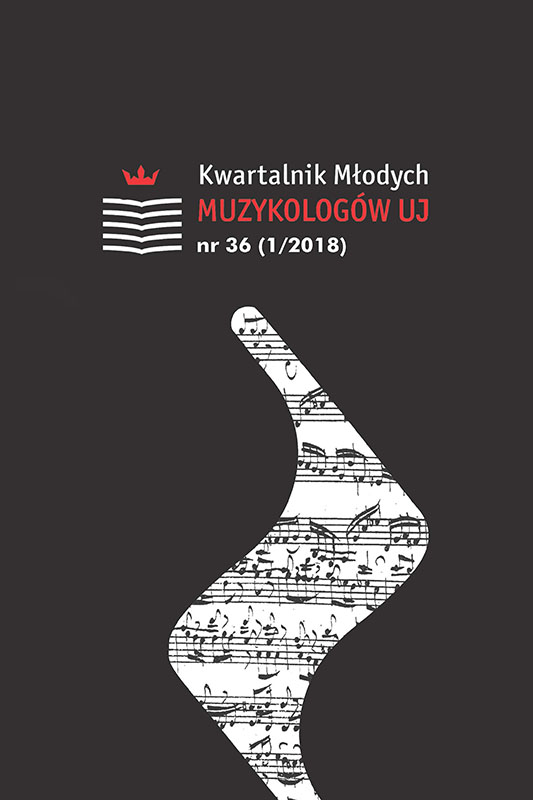
Piotr Hertel (1936–2010) – a composer of film, theatrical and stage music (among others the hit Parasolka to words of Janusz Słowikowski). He is the author of music for numerous cartoons made in the animation studio Se-Ma-For in Łódź, including soundtracks for legendary TV series Miś Uszatek and Plastusiowy pamiętnik. The aim of the article is to characterize music composed by Hertel for the above-mentioned as well as several other movies in the context of his views on the role of music in cartoons and his compositional technique. The broader knowledge on this topic was gained thanks to the interview made with the members of Hertel’s family: his wife Jadwiga and son Michał.
More...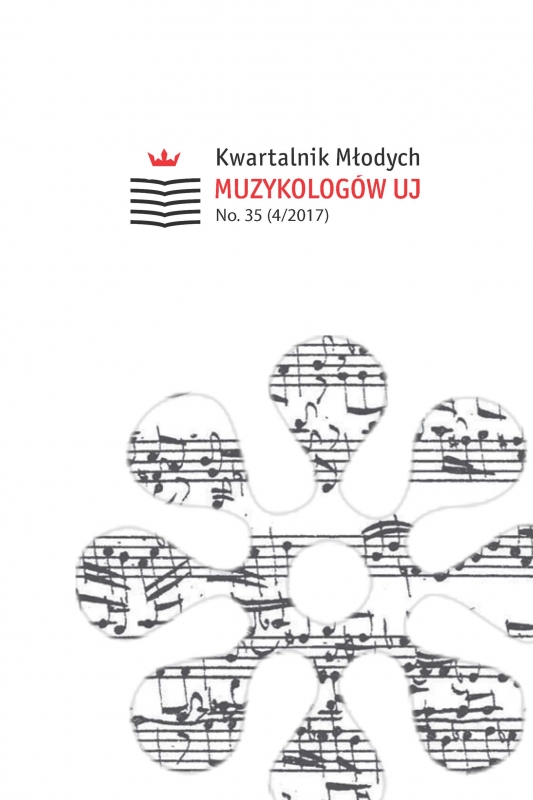
Since the middle of the 19th century, Franz Schubert’s song cycles Die schöne Mullerin and Winterreise are not only considered as an outstanding contribution to the Lied genre, but also as “romantic” compositions par excellence, whose protagonists might be depicted adequately only by performances of male singers. The “masculine nature” (Carl Lafite) of these thoughts, emotions and actions might be inappropriate for female singers. This attitude, which is still present today (even amongst professional musicians and musicologists), though, contradicts not only the performance practice of the early 19th century, but even Schubert’s handling of his songs. In fact, the idea of these two cycles as “men’s cycles” has only developed in the course of the 19th century, when various impacts such as the general upvaluation of the Lied genre, the transfiguration of the composer, the interpretation of his songs as being a personal statement, and the idea of Werktreueshaped the reception of Schubert’s compositions. These factors led to the consolidation of strong and still valid power structures, in which men are regarded as the norm, whereas women (and other alternative voice categories like countertenors) appear as deviation from this norm. These structures are tightly related to similar conditions and principles which have been outlined in the past decades by the masculinity studies on higher levels of our society. In this paper, I will set out this whole process by delineating the performance practice at Schubert’s time, his own attitude (insofar as it is possible), the various influences of romantic musical aesthetics, and the development of the mentioned performance tradition towards the end of the 19th and the beginning of the 20th century. Furthermore, a number of statements from the 21st century will demonstrate that these concepts are still common today, and I will correlate them with some certain principles pointed out by masculinity studies from the last decades.
More...
The work concerns Giovanni Battista Bassani’s output and its reception with a particular emphasis on manuscripts preserved in the collection from parish church in Grodzisk Wielkopolski. The oeuvre of this composer has been preserved to a huge amount today—there are 441 manuscripts and 67 prints preserved in 287 copies.The article consists of two parts. The first chapter presents a list of sources of the composer’s works, created using the RISM database with special attention to the Polish sources. In addition, a list of sources identified as the transmission of Bassani’s output is presented. The second part of the article characterises the composer’s works preserved in the collection from parish church in Grodzisk Wielkopolski.
More...
Dresden played no role in Carl Ditters von Dittersdorf’s life, but history made this city one of the most significant places regarding preserved sources of his works. In the Department of Special Collections (German: Sondersammlungen) of the Sächsische Landesbibliothek—Staats- und Universitätsbibliothek in Dresden (English: Saxon State and University Library Dresden, abbr.: SLUB), there are, among others, more than thirty archival sources containing Carl Ditters von Dittersdorf’s symphonies. That makes it the third richest collection of symphonic works by this composer. The majority of them comes from court’s theatre of Duke Frederick August Braunschweig-Oels in Oels (Öls, Polish: Oleśnica). It is one of the most representative collections of Dittersdorf’s symphonies from all known archives. There are several composer’s autographs, partial autographs, a large variety of works from all periods of his activity, and a few unique copies of symphonies as well. A minor body of Dittersdorf’s symphonies comes from two different sources, until recently unknown. One group is the set of partbooks (contemporary with Dittersdorf), including—apart from Dittersdorf’s works—several dozen movements of serenades, symphonies, string quartets etc. of G.B. Sammartini, J.G. Graun, J.Ph. Rameau, the Stamitz family and J. Haydn, apparently used in performances on the occasion of court activities, not in concerts. The second, from 1860s, is the set of scores, prepared by C. Mehner.
More...
The purpose of this article is to present a broad spectrum of relations between Arthur Honegger—a composer, and Jean Cocteau—a poet and playwright. They are often associated with the group under the patronage of Cocteau called Les Six, to which Honegger undoubtedly belonged. The poet gathered young composers around himself and became the initiator of artistic meetings and concerts. Most of them took place between 1917 and 1921. Cocteau wanted to show the path French music should follow. In accordance to that, his aesthetic manifesto Le Coq et l’Arlequinwas published in 1918.In the first section, Honegger’s and Cocteau’s aesthetic views concerning music, its elements expression are presented and confronted. Next, the composer’s as well as poet’s work is presented by the example of their cooperation.The analysis of mutual relations leads to the conclusion that, despite many different views, Honegger and Cocteau respected each other and were very kind. The composer significantly departed from the ideals of Cocteau and developed his own individual style resulting from a wide range of musical inspirations. Les Six was a short-lived group and Cocteau himself was gradually moving away from his controversial and radical views.
More...
Paul Hindemith is one of the most famous composers of the 20th century as well as the most important thinkers in the field of music. His aesthetic beliefs are inspired mainly by Boethius and Saint Augustine. He raises an issue of ideas of tradition and progress, which seemed quite disputable in the music of the 20th century. Hindemith believes that in the world exist some universal spiritual principles, which must be integrated by composers in the process of creating music. He criticises the approaches in which the technique itself appears to be predominant, therefore he negates such techniques as the twelve-tone chromatic scale. According to Hindemith, the development of music must be based on traditional fundaments, which, however, can be linked to modern styles and ideas. That seems crucial not only in the process of composing, but also in teaching music, both in theory and in practice.
More...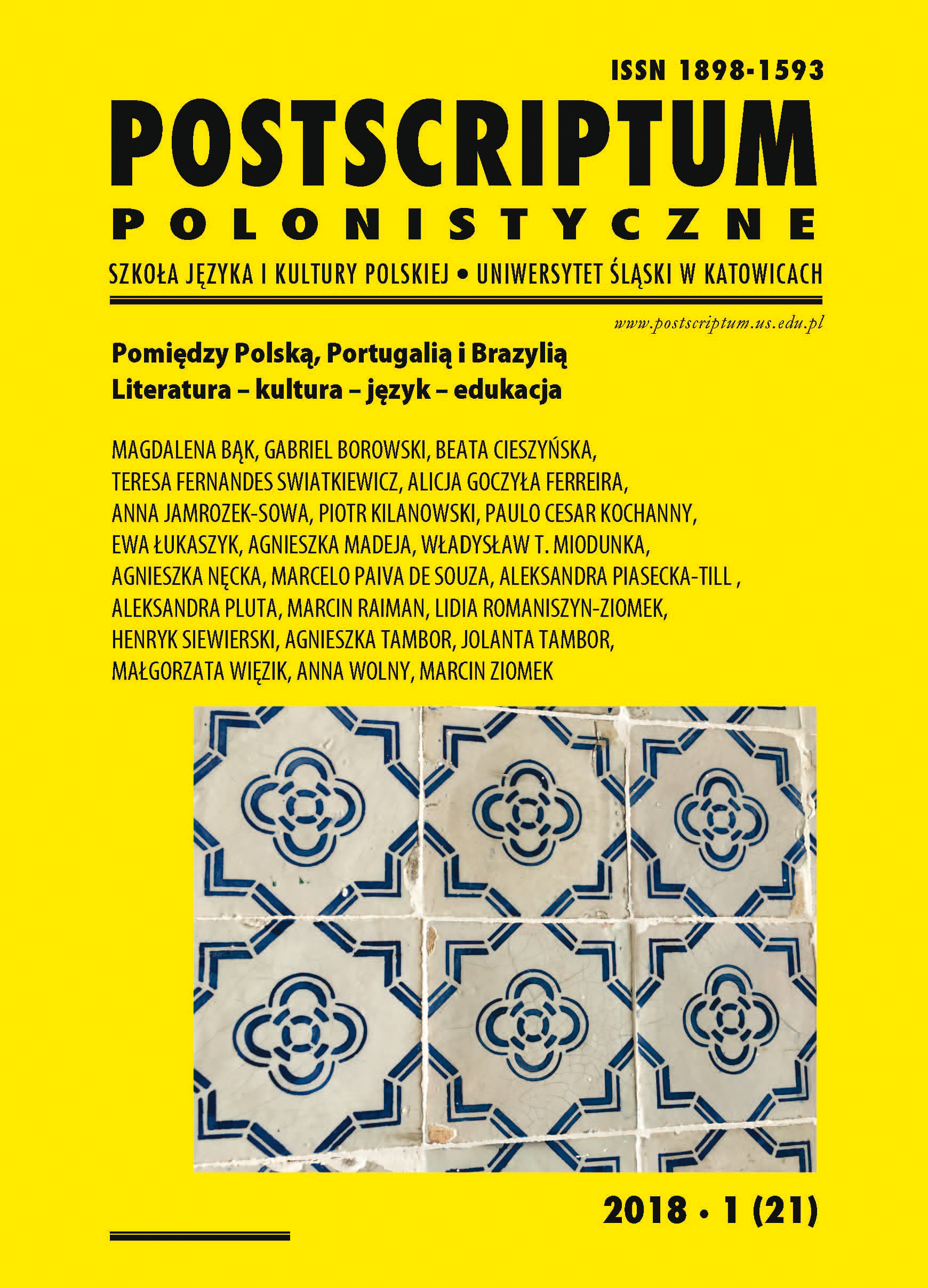
The article presents Atanazy Raczyński’s research on Portuguese art against the modernization and Europeanisation processes in Portugal in the 19th century. A specific view of Portuguese artistic heritage and openly expressed critical opinions of the Polish scholar made him a controversial figure, which paradoxically contributed to the importance and resonance of his work. Discouraged by the conflict, Raczyński did not complete his final synthesis. Nevertheless his letters to the Art Society in Berlin, as well as a dictionary of the artists, initiated history of art (regarded as a scientific discipline) in Portugal.
More...
The text reports on the research focused on the analysis of the functioning model of the Associacion for the Support of Development of Szczawa – a bottom-up initiative which influences local growth through cultural actions. The article present a case study of the relations between initiatives of social culture, bottom-up nature and socio-economic growth. It is based on the results of qualitative research. Description of the title Association, its actions and the context of its functioning is also an important part of the article.
More...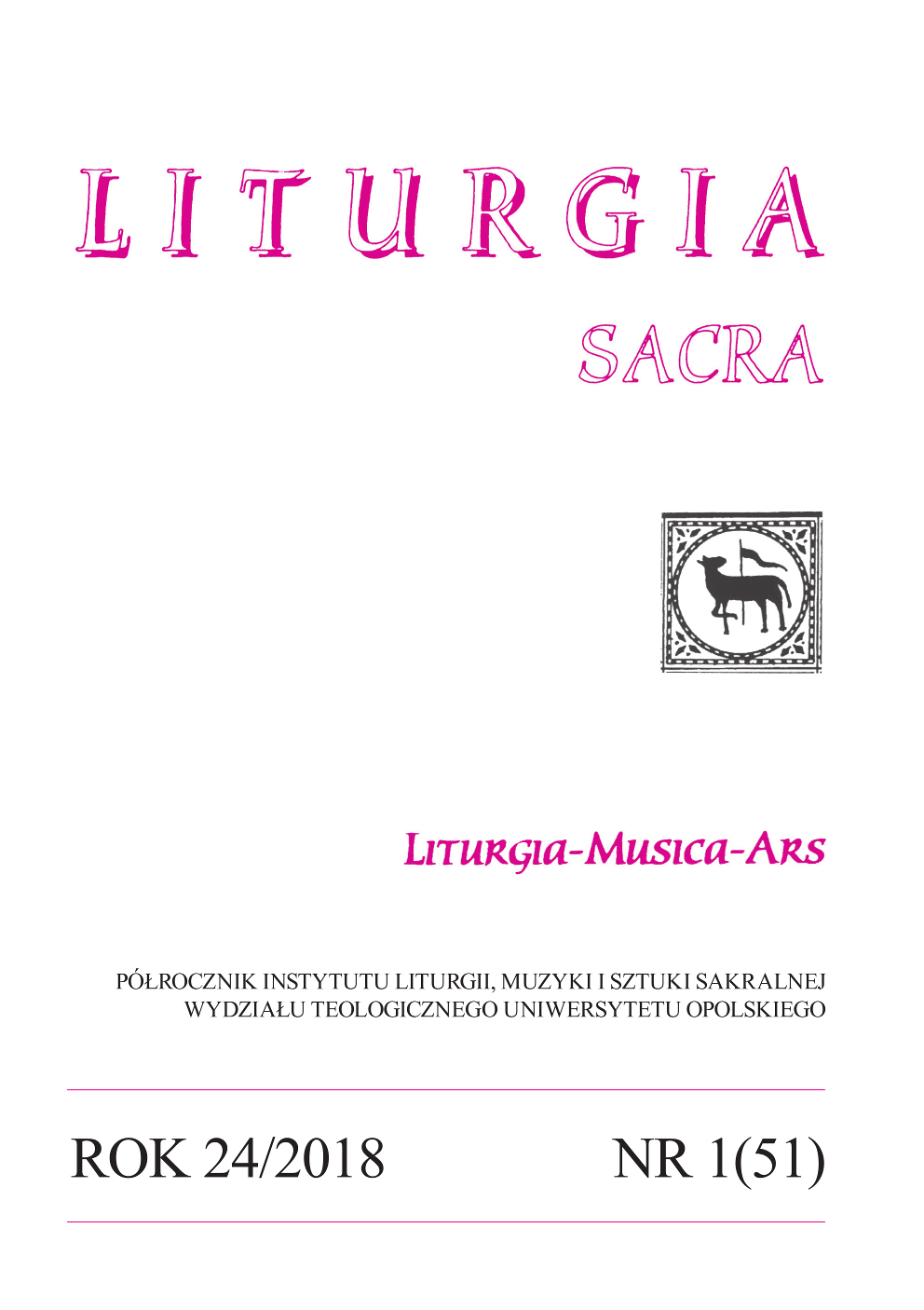
The object of the considerations in the present study is the prohibition of the use of female voice in Orthodox synagogues and similar restrictions which were in force in the Christian Church, as well as changes that have taken place in this regard While in the female monasteries religious music began to flourish relatively early, the Jewish women could turn to perform liturgical chants only in effect of resistance against the dictum called in brief Kol isha. Beginning of these changes coincides with the period of the Jewish Enlightenment, Haskalah, in the nineteenth century, and they have been proceeding to modern times.
More...
Antiphonary of abbot Mścisław (Pl-Wn 12720 V) dating from before 1409 year and being one of the oldest surviving Tyniec books, documents not only its own history but also the history of the musical script in the Tyniec scriptorium from the turn of the 14th/15th century until the end of the 16th century. The manuscript testifies both one of the musical notations used in the scriptorium of the time, and the evolution of the musical notation in the scriptorium, including apart from the basic square notation various notation forms – both in the original and later layer (palimpsest fragments, margin entries, added cards) – which had been forming in this scriptorium over many years. In the scriptorium, first we can follow the changes of neumatic forms leading to square notation, and at the moment of its full formation, return to Gothic neumes. This study presents all the forms of musical record present in this book.
More...
The article introduces the figure of Redemptorist, rev. prof. Józef Ścibor, a well-known musicologist, expert in the theory and history of medieval music, a specialist in the field of Gregorian chant, and respected organist – composer of liturgical music. Father Ścibor for almost all his life was associated with the Institute of Musicology of The John Paul II Catholic University of Lublin. A short biography is therefore not only a reminder of J. Ścibor, but also a contribution to the history of his University and the Institute.
More...
Royal Prussia experienced a complex transformation time in the 17th century, experienced by the socio-religious crisis, wars and plague. The religious phenomenon of northern Pomerania is primarily an indication of emerging new places of Marian cult, passion, wake up of the pilgrimage movement. The Sanctuary of the Mother of God in Swarzewo and Calvary of Wejherowo played a crucial role in creating spiritual life. The integration of the Catholic community of northern Royal Prussia around the Passion and Marian mysteries in the context of the implemented reforms of the Church and the problems of the still active reformation took on a new culture-forming significance. Catholicism based on the Tridentian foundation of faith in the renewal of the Pomeranian Church was realized thanks to unique personalities. To them, undoubtedly, the Franciscan Father Grzegorz Gdański devoted himself immensely to the cause of the Church in the difficult social reality that he had the courage to contest. For whom loyalty to Christ and patriotism was the principle of understanding life’s mission.
More...
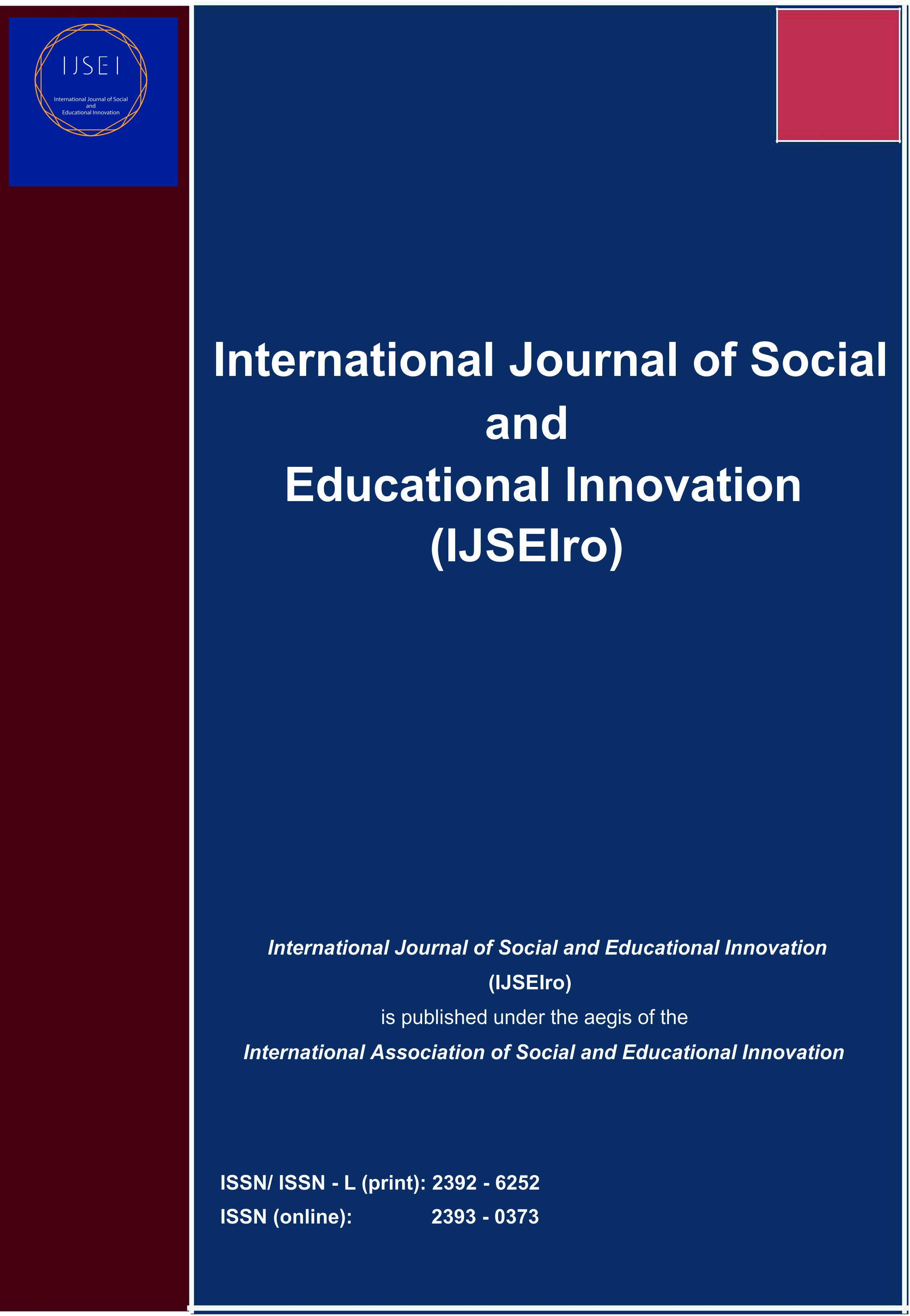
This paper aims to theorize the interplay of the mythic imaginary with education and ideology, focusing on the case of Kosovo. After the Second Wold War, a hundred Albanian-language primary schools were opened. 1970 saw the establishment of the University of Prishtina which has had a great impact not only on educational policy but also on the national political agency. This is how the educational policy came in contact with political myths. After Kosovo’s autonomy was abolished in 1991, the Albanian schools and university were closed by the police forces. Education soon took over the mission of the parallel state by being implied in national ideological agencies. This ideological implication continued even after 1999, when an international protectorate was established under UN auspices. Within this political milieu the process of reform has been sketched, a process which has presented reform mainly as a protection from the wrong way, by employing political myths to create tomorrow’s leaders.
More...